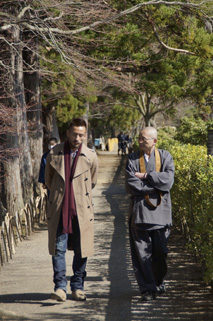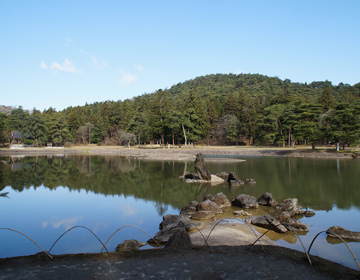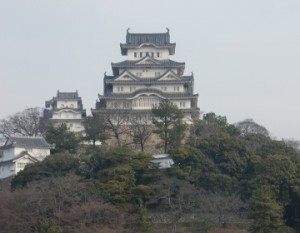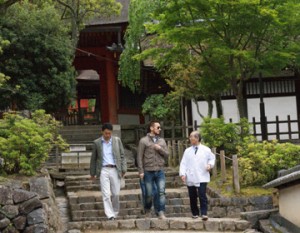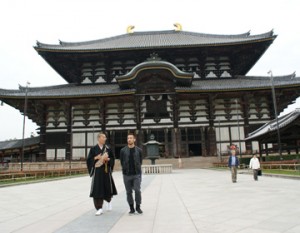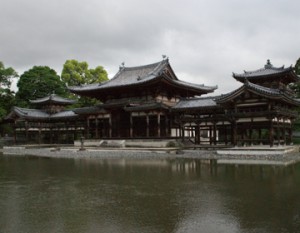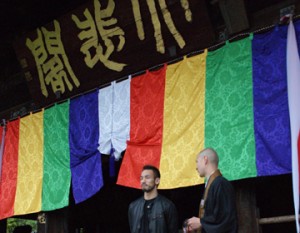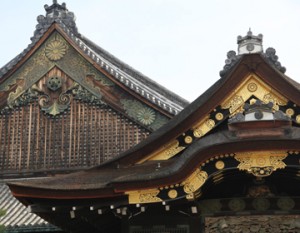Registered as World Heritage Site in 2011
The Hiraizumi area was registered as World Heritage Site in 2011 under the title ”Hiraizumi – Temples, Gardens and Archaeological Sites Representing the Buddhist Pure Land, in which Motsuji is included.
Motsuji was founded by Jikaku Daishi Ennin over 1000 years ago in 850. This is about the at the same time when Chusonji Temple was built. After that, Motohira and Hidehira from Oshu Fujiwara family created a huge monastery to revitalize the temple. Many halls and monasteries were built and the temple was said to be larger than Chusonji Temple at the time. Later, in 1573, during the Age of the Warring States, it was burned in combat and all the buildings were burned. As the power of the Fujiwara family declined, all the halls were destroyed after encountering many disasters. However, the garden and the ruins of the monastery remained in nearly perfect shape.
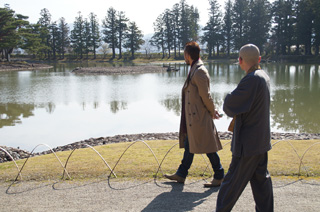
The reconstructed main hall originally built in the Heian period
The main hall was built in 1989. According to head priest Kojun Shirayama who guided us, the building was re-constructed based on the building style from the Heian period.
Nakata shared his impression after seeing the main building, ”Vermillion red painting is more associated with Shinto shrines.” Shirayama explained, ”Yes it certainly does. However Heian period was s time when Shinto and Buddhism was fused together. So there was no difference between shrines and temples. They both existed at the same place. It was only after Meiji period when the two religions were made distinct from each other.”
But why did they choose the style of the Heian period for re-construction? It was because the garden remained in the style of the Heian period. The garden which is also called Paradise (Jodo) Garden was created in the space of about 20 hectares. The design is said to be based on the oldest known garden book ”Sakutei-ki” written in the Heian period. The garden is built around the Oizumigaike pond, and the ”araiso” style waterfront and the ”kare sansui” style landscaping replicates famous landscapes of Japan with the combination of manmade and natural beauty.
”For better or for worse, this area did not have large scale development projects so that is why the Heian period garden and ruins still exist untouched.” Shirayama told us. They wanted to create a main hall to match the garden.
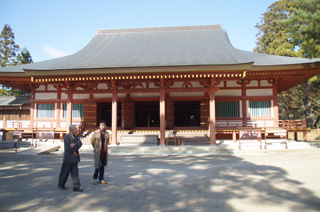
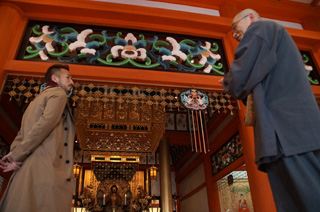
“Hono Enbu”, dance by the monks
Motsuji, as mentioned earlier, is a part of the World Heritage Site. In the middle of the site, there is the Jodo Garden and the ruins of ”Rinchi Garan” nearby is designated as National Special Historic Site and Special Beautiful Scenery. In addition, there is the main hall, Kai Kaizando, Jogyodo and the famous stone plaque with Basho’s famous haiku ”Summer plants, Soldiers, All remains a dream.”
There is also an Intangible Cultural Property at Motsuji. The dance is called ”Einen no Mai” (longevity dance) and performed by priests to be offered to Buddha and his guardian deity. It is performed in a hall called Jogyodo. The offering is made on the 20th day after New Years to pray for the peace of the nation, rich harvest and prevention of illness. It is generally known to the public as the ”20th Night Festival”.
As we stood in front of the Heian period garden, we have a great view. The most beautiful seasons are the spring with fresh green and autumn. The view made our hearts relax.
